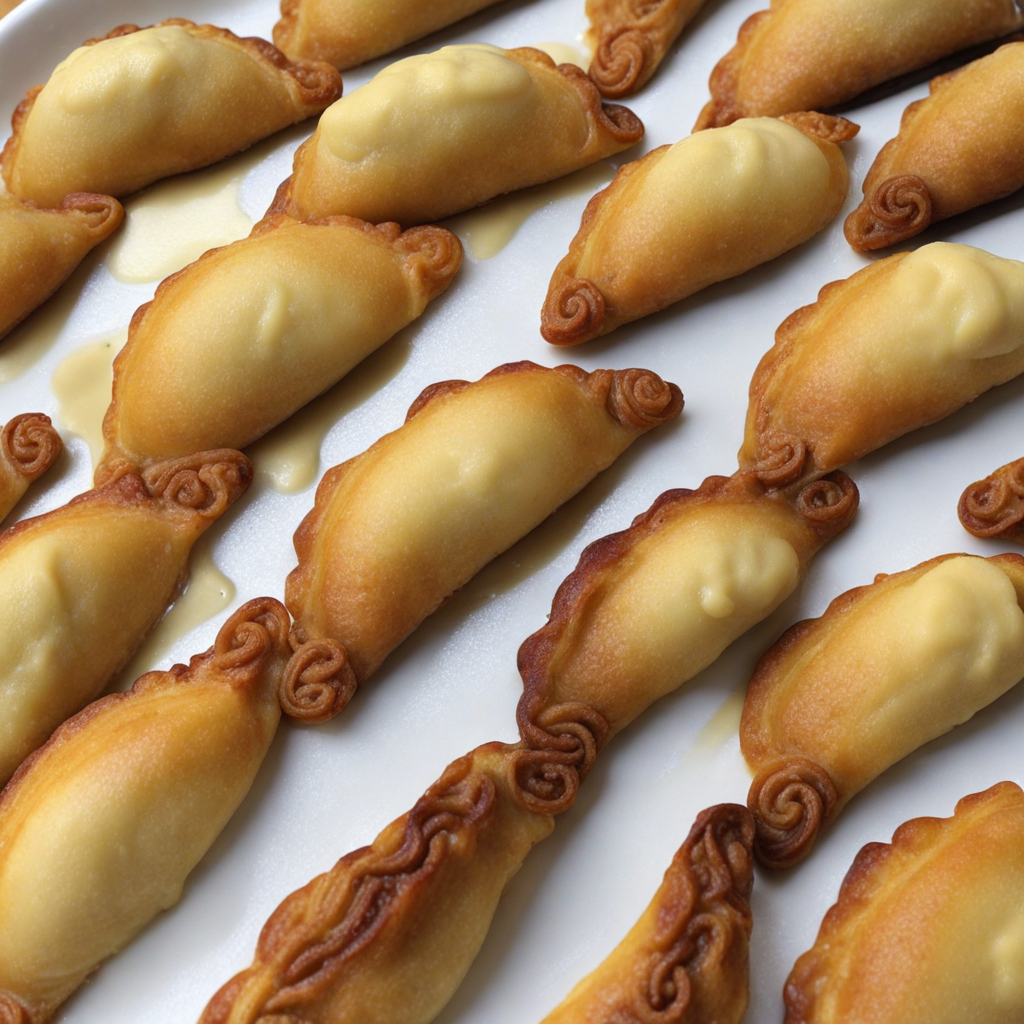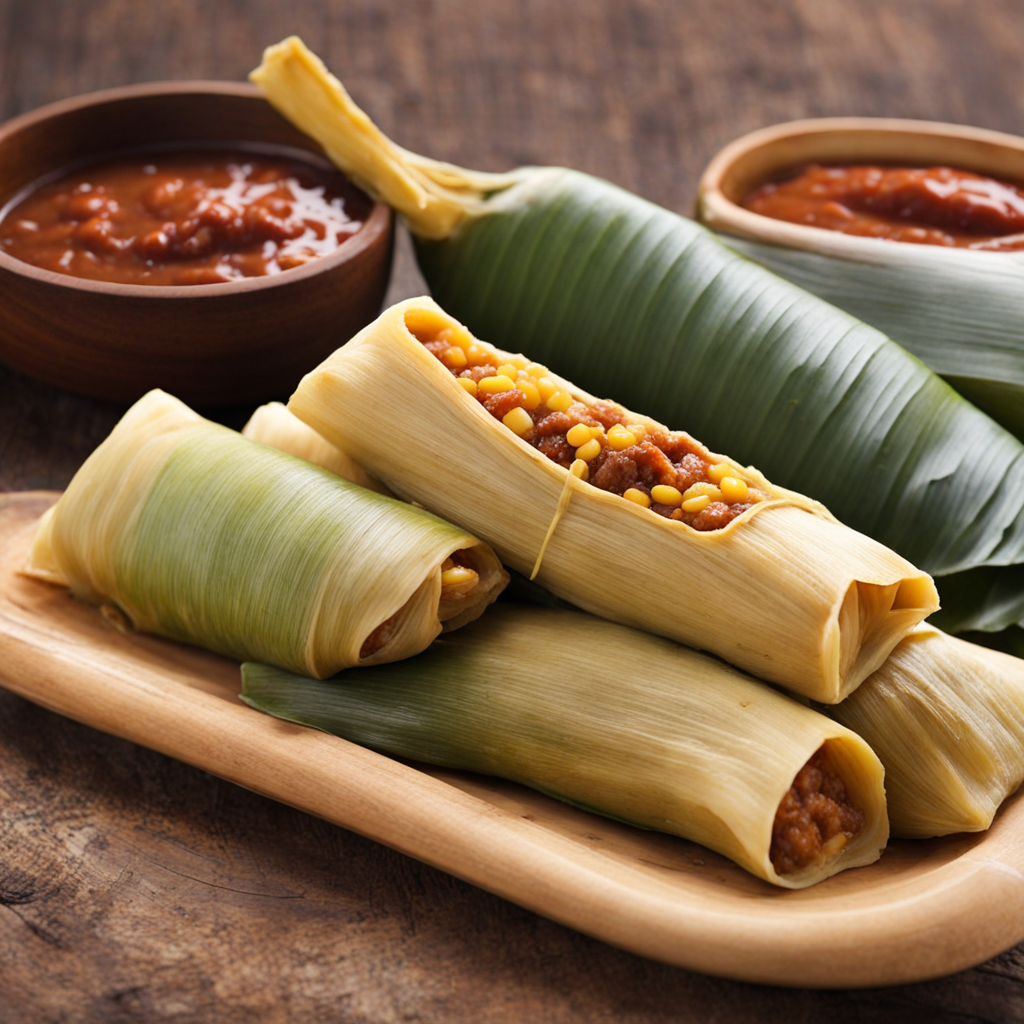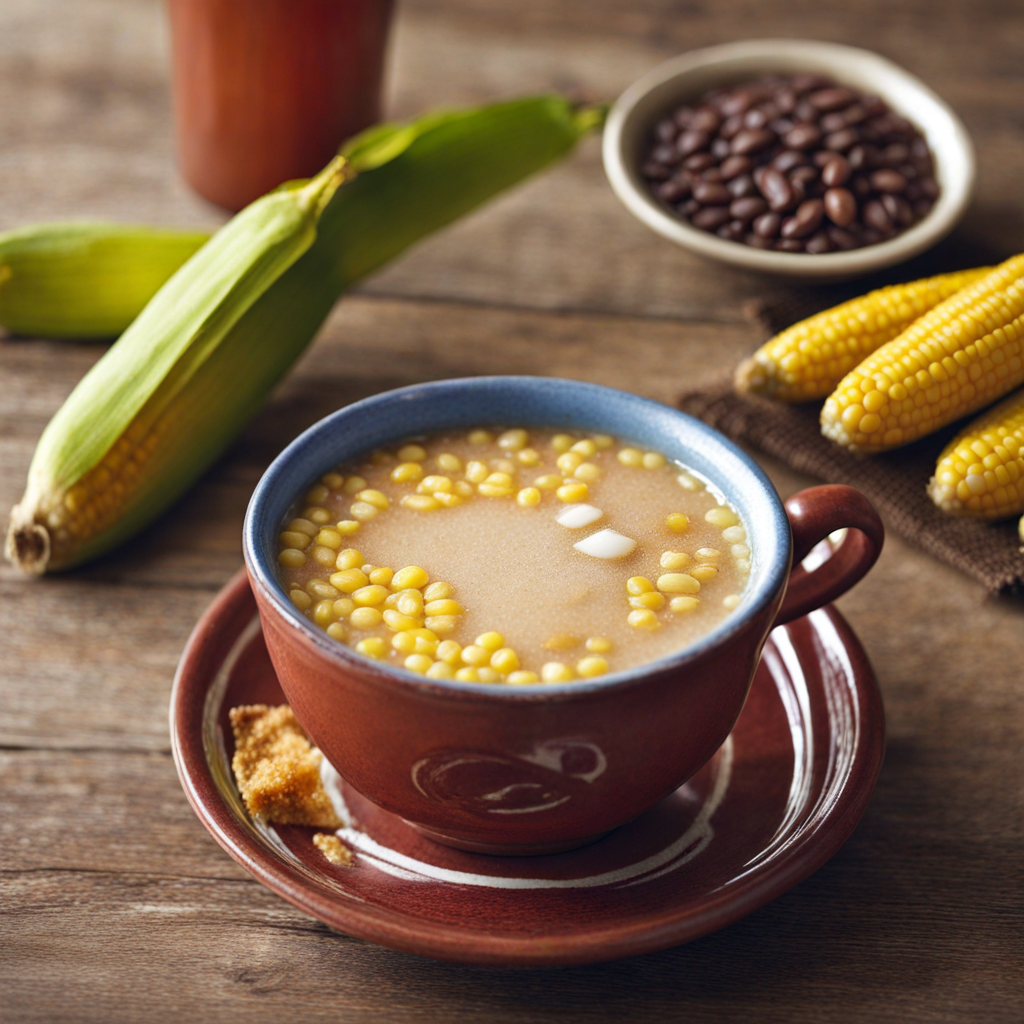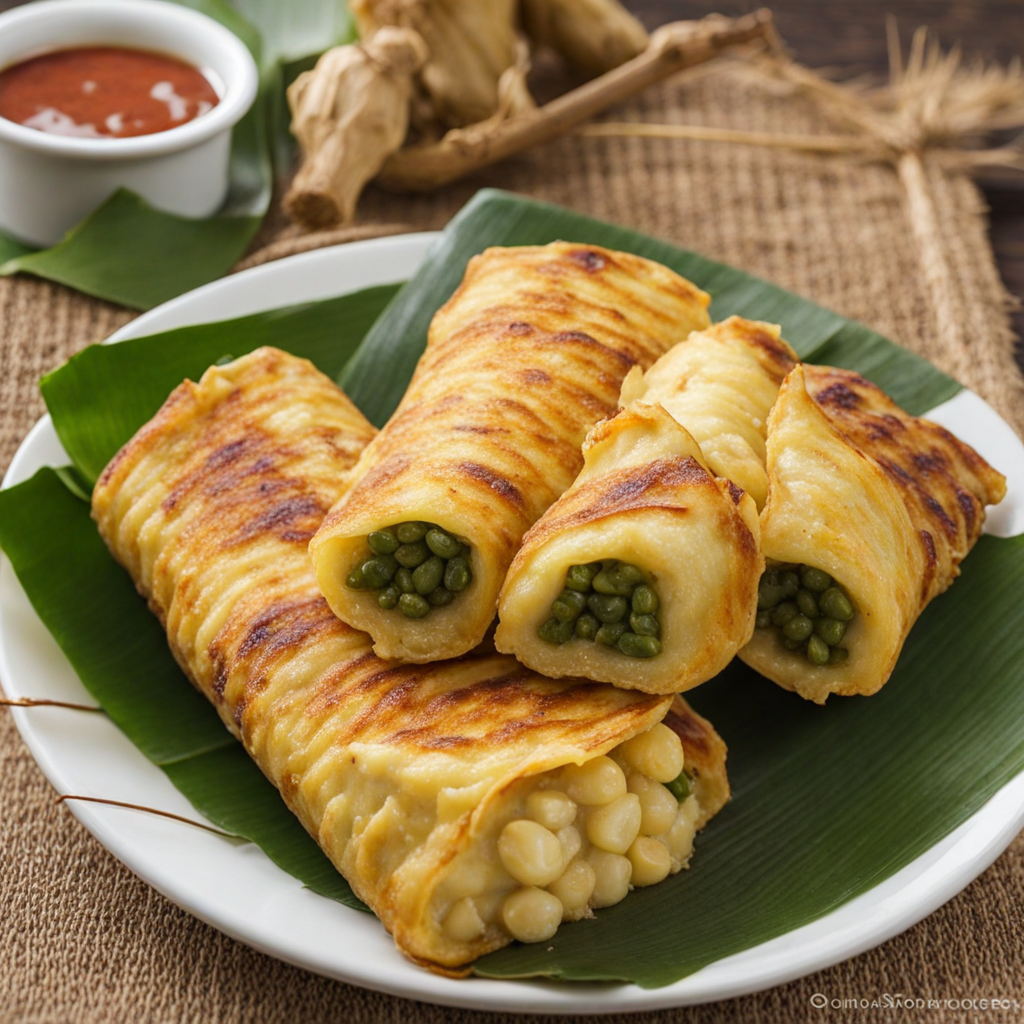Empanadas de Leche o Frijol
Empanadas de Leche o Frijol are a delightful representation of Salvadoran culinary tradition, showcasing the country's love for rich flavors and comforting textures. These empanadas are typically made from a dough that is both tender and slightly sweet, which provides a perfect contrast to the savory or sweet fillings. The dough is often crafted from corn flour, giving it a pleasingly rustic texture that holds up beautifully during cooking. The empanadas are usually fried to a golden brown, resulting in a crispy exterior that encases the warm, flavorful filling within. When it comes to the fillings, there are two main varieties that truly stand out: the creamy, sweet filling made from milk (leche) and the hearty, savory option filled with beans (frijol). The leche filling is often enhanced with hints of cinnamon and sugar, creating a dessert-like experience that is both indulgent and satisfying. On the other hand, the frijol filling is typically seasoned with garlic, onions, and spices, making it a robust and comforting choice that highlights the essential ingredients of Salvadoran cuisine. These empanadas are not just a meal; they are often enjoyed as a snack or dessert, making them versatile for any part of the day. They can be served alongside a side of spicy salsa or a dollop of sour cream for added flavor. The combination of the crispy shell, the rich and varied fillings, and the possibility of accompanying sauces makes Empanadas de Leche o Frijol an exciting culinary discovery for anyone looking to explore the vibrant food culture of El Salvador.
How It Became This Dish
Empanadas de Leche o Frijol: A Culinary Journey Through El Salvador Empanadas de Leche o Frijol, a beloved dish from El Salvador, encapsulates the rich tapestry of the nation’s culinary heritage, reflecting its indigenous roots, colonial influences, and the resilience of its people. These savory or sweet turnovers, filled with either bean paste or a creamy milk-based filling, serve as a testament to the evolution of Salvadoran cuisine and its cultural significance throughout the ages. #### Origins: The Confluence of Cultures The history of empanadas in El Salvador can be traced back to the indigenous peoples of Mesoamerica, who cultivated staples such as corn and beans long before European contact. Corn, or maize, was not just a dietary staple; it was central to the identity and spirituality of the indigenous cultures. When the Spanish arrived in the 16th century, they introduced wheat and dairy products, which began to intertwine with local ingredients and culinary practices. Empanadas, a term derived from the Spanish verb "empanar," meaning "to coat with bread," found their way into Salvadoran kitchens through the colonial legacy. The Spanish brought with them various pastries and stuffed breads, which blended with local ingredients to create unique variations. The empanadas de leche o frijol emerged as a particularly popular form of this dish, showcasing both the indigenous love for beans and the European influence of dairy and wheat. #### Cultural Significance Empanadas de Leche o Frijol are more than just food; they are a symbol of Salvadoran culture and identity. Often enjoyed during festive occasions, such as the Feast of the Divine Savior of the World on August 6th, these empanadas reflect the communal spirit of Salvadoran society. Families gather to prepare them, passing down recipes and traditions from generation to generation. The empanadas have a dual nature, representing both the sweet and savory sides of Salvadoran cuisine. The milk-based filling, often a blend of sweetened condensed milk, sugar, and spices, reflects the influence of Spanish desserts and the region's dairy farming traditions. In contrast, the bean-filled version highlights the essential role of beans in the Salvadoran diet, symbolizing sustenance and nourishment. These empanadas are also commonly sold by street vendors, making them an accessible and affordable option for many Salvadorans. The act of enjoying them in communal spaces—be it a bustling market or a family gathering—fosters a sense of community and belonging, integral to Salvadoran culture. #### Development Over Time As El Salvador evolved politically and economically, so too did its food culture. The 19th and 20th centuries brought significant changes to the country, with waves of migration and urbanization altering the landscape of Salvadoran society. The introduction of new ingredients, cooking techniques, and culinary influences enriched the traditional recipes. In the mid-20th century, with the rise of Salvadoran migration to the United States, empanadas de leche o frijol gained international recognition. Salvadoran immigrants brought their culinary traditions with them, leading to the establishment of Salvadoran restaurants in major cities such as Los Angeles, Washington D.C., and Miami. These establishments often served as cultural hubs, where Salvadorans could connect with their heritage and share their food with a wider audience. The empanada’s adaptability played a significant role in its enduring popularity. Variations emerged, reflecting local preferences and available ingredients. For instance, in some regions, empanadas might be filled with sweet potato or pumpkin in addition to the traditional milk or bean fillings. This flexibility has allowed empanadas to evolve while still honoring their roots, making them relevant to contemporary tastes. #### Modern Day: A Culinary Renaissance Today, empanadas de leche o frijol symbolize a culinary renaissance within El Salvador, as chefs and home cooks alike experiment with traditional recipes and contemporary techniques. The popularity of food festivals and culinary tourism has brought renewed interest in Salvadoran cuisine, showcasing the empanada as a star dish. Social media has also played a crucial role in this culinary revival. Platforms like Instagram and TikTok allow food lovers to share their empanada-making experiences, inspiring others to explore this dish. Recipes are being modernized, with some cooks incorporating international flavors or health-conscious alternatives without losing the essence of the traditional empanada. In recent years, there has also been a push towards sustainability and the use of locally-sourced ingredients. Many Salvadoran chefs are focusing on organic farming and supporting local producers, further enriching the narrative of empanadas de leche o frijol as a dish that not only nourishes but also respects the environment and local culture. #### Conclusion: A Taste of Heritage Empanadas de Leche o Frijol are more than just a culinary delight; they are a reflection of El Salvador's history, culture, and identity. From their indigenous roots and colonial influences to their modern-day adaptations, these empanadas tell a story of resilience and adaptability. They remind us of the importance of food as a cultural artifact, connecting generations and communities. For Salvadorans, whether at a family gathering, a street market, or a restaurant, these empanadas evoke a sense of nostalgia and pride. They are a celebration of the flavors and traditions that define El Salvador, a dish that continues to evolve while remaining deeply rooted in the country’s rich culinary heritage. As more people around the world discover the deliciousness of empanadas de leche o frijol, they become not only a tasty treat but also ambassadors of Salvadoran culture, inviting all to explore and appreciate the vibrant history behind this cherished dish.
You may like
Discover local flavors from El Salvador







